[CASE] SLA 3D printing at a ship electronics factory

We installed the iSLA-450 Pro 3D printer at the A. Kulakov Plant , which specializes in the production of low-current equipment and automation, control and information protection systems for ships and vessels of different classes.
The plant’s products provide safe and efficient navigation of all types of vessels across all the seas of the planet.
About the Shining3D iSLA-450 Pro Printer
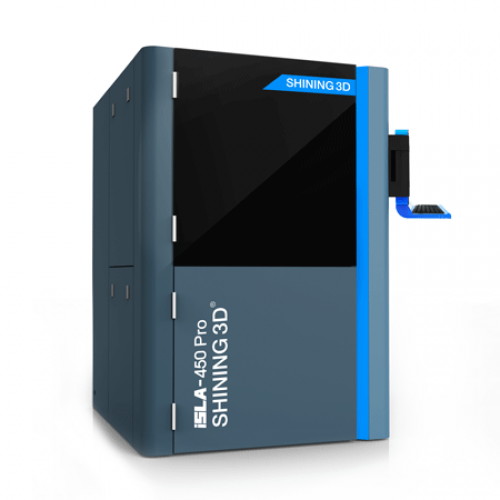
- Laser spot diameter: 0.1-0.15 mm
- UV wavelength: 355 nm
- Material: photopolymer resin
- Printing Area: 450x450x400 mm
- Power Supply: 220V 50Hz
- Supported Operating Systems: window XP, window 7
- Power Consumption: 2000 W
- Dimensions (mm): 1100х1400х1800
- Printing Technology: SLA
- Layer thickness from: 50 microns
- Printing accuracy: ± 0.05 mm (up to 100 mm), ± 0.1% (more than 100 mm)
- File Format: .STL, .SLC
- Print speed: 10g / h
How it was done without 3D printing
Before the advent of 3D printing, the design and production of cases and load-bearing elements of equipment was carried out by traditional methods, including a long process of manual prototyping and testing. Digital production technologies make it possible to significantly reduce the time and labor required, which means to speed up and reduce the cost of production.
How to choose equipment
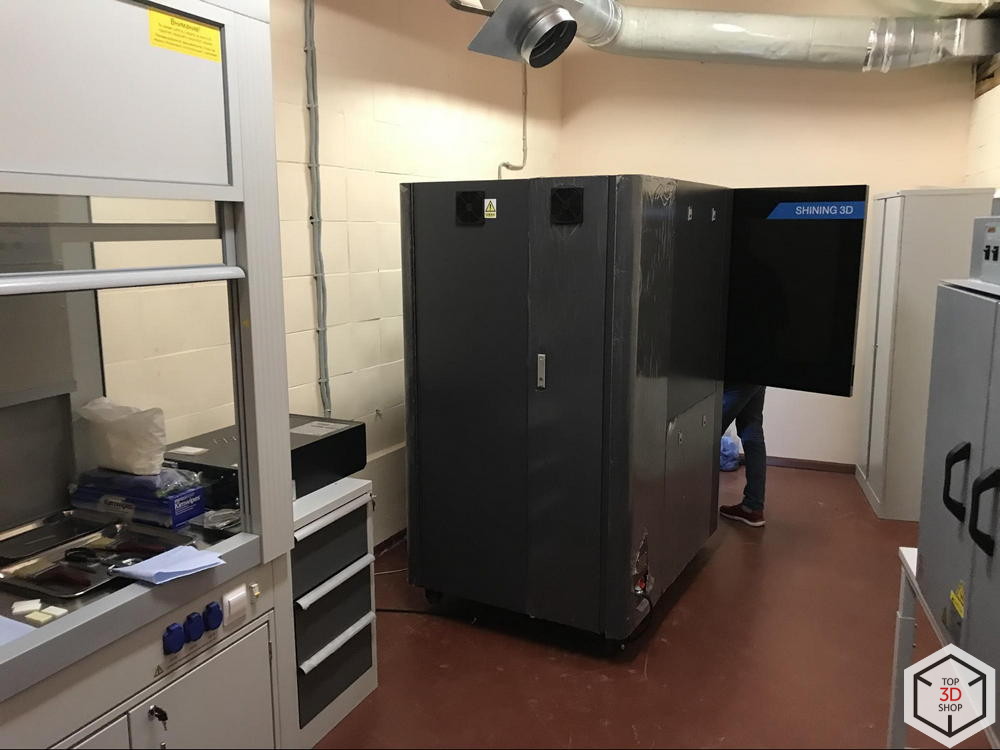
Customer - Joint Stock Company “A. Kulakov Plant”, is engaged in the development of equipment and control systems for marine vessels. Products manufactured by the plant are designed to equip ships and vessels of all classes.
The plant faced the task of equipping its production with additive technologies to solve various production problems.

The plant turned to Top 3D Shop, as the largest integrator of additive technologies in the region. The direct task was to select an additive installation with the ability to directly print forms for a vertical injection molding machine.
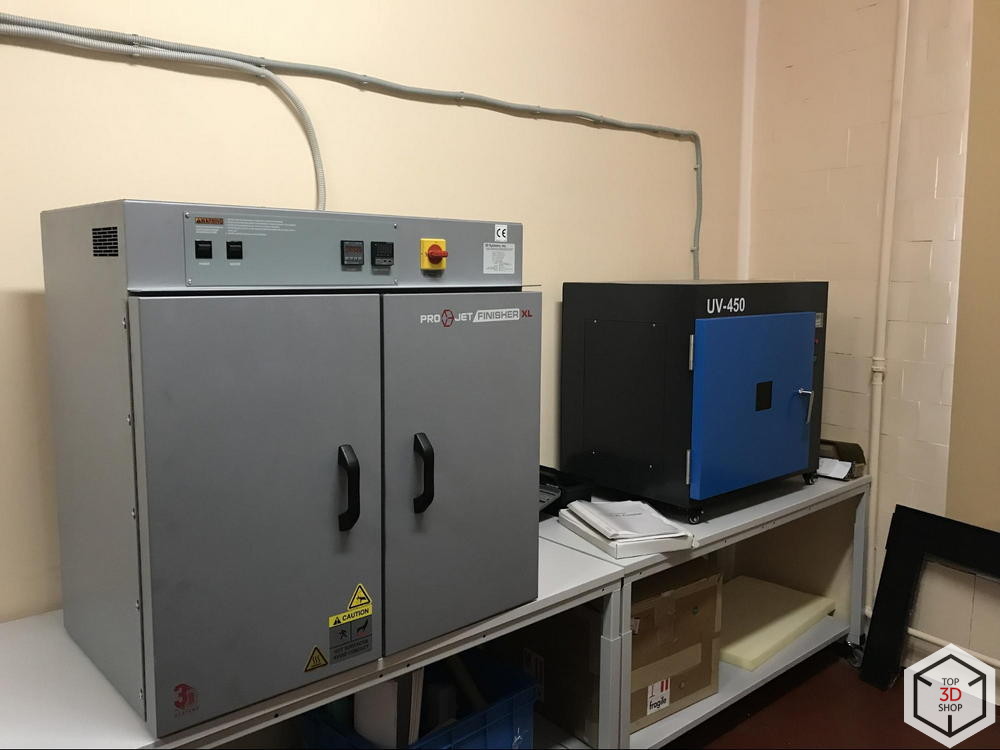
The choice of a 3D printer was made in favor of the Shining iSLA-450 industrial SLA installation.
The transition to Digital Production will significantly reduce the cost and time of production of small-scale plastic products, compared with traditional injection molding. Next is more about this.
The advantages of this solution
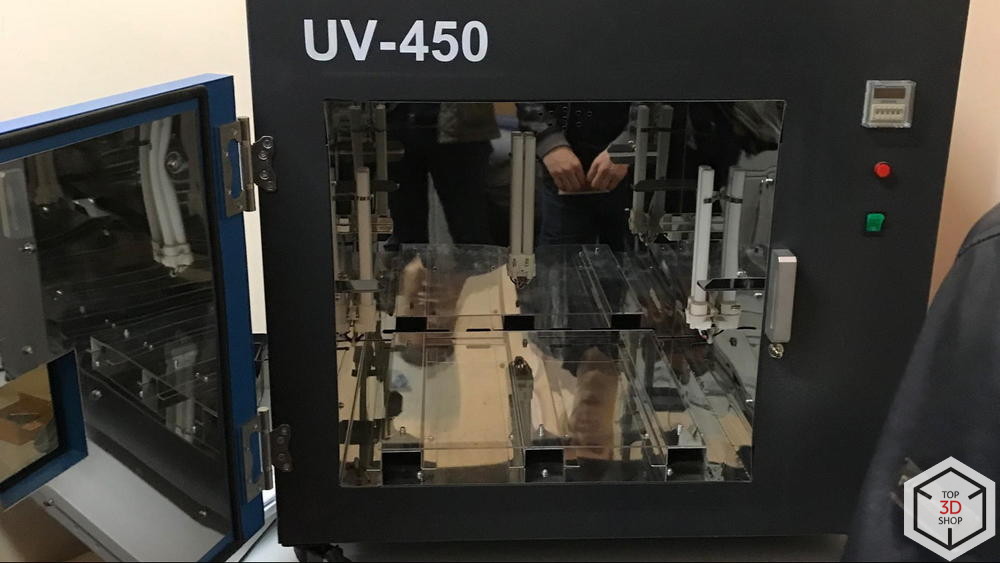
The advantage of this installation is the ability to work with almost any photopolymer materials on the market.
In this case, Somos PerFORM polymer was chosen as the material , the main property of which is the ability of the printed part to withstand temperatures up to 268 degrees Celsius.
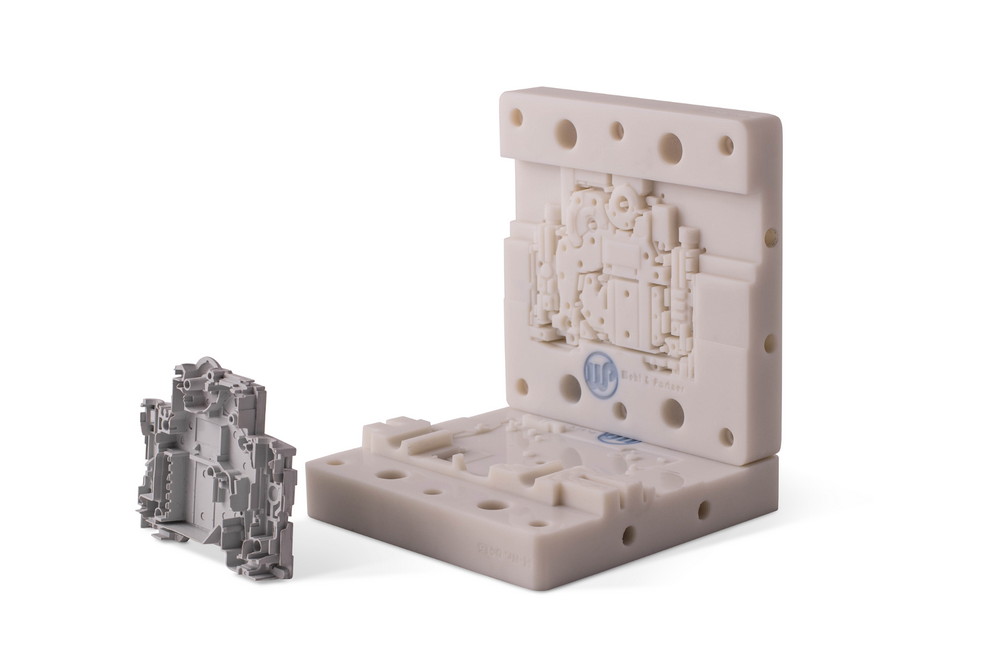
- Water absorption: 0.20%
- Viscosity: ~ 1,000 cps @ 30 ° C
- Dielectric constant: 4.7: 60 Hz; 4.0: 1 KHz; 3.6: 1 MHz
- Dielectric Strength: 26.3 kV / mm
- Poisson's Ratio: 0.32
- Flexural modulus: 10,000 MPa
- Tensile modulus, MPa: 10,500 MPa
- Density: ~ 1.61 g / cm3 @ 25 ° C
- Tensile Strength Rm: 68 MPa
- Tensile Strength: 42.2 MPa
- Bending Strength: 120 MPa
- Tensile strength: 32.8 MPa
- Shore Hardness: 94
- Notched Izod Impact Strength: 17 J / m
- Elongation at break,%: 1.1
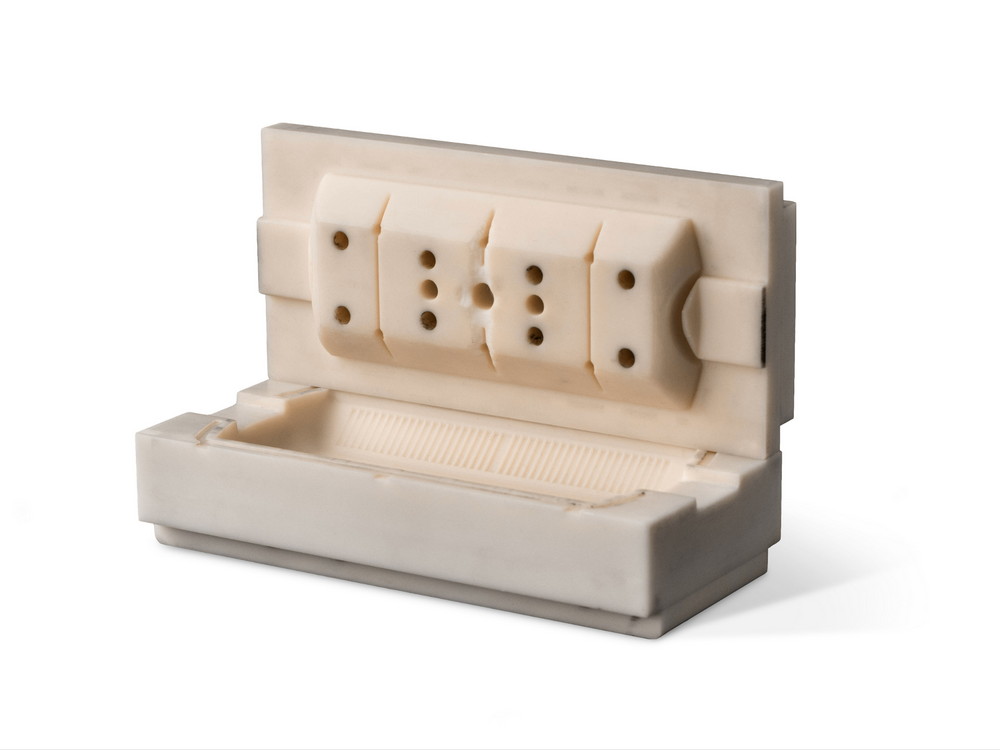
This technique allows you to print forms for a vertical injection molding machine on a 3D printer, which is much cheaper and faster than manufacturing them on a CNC milling machine.
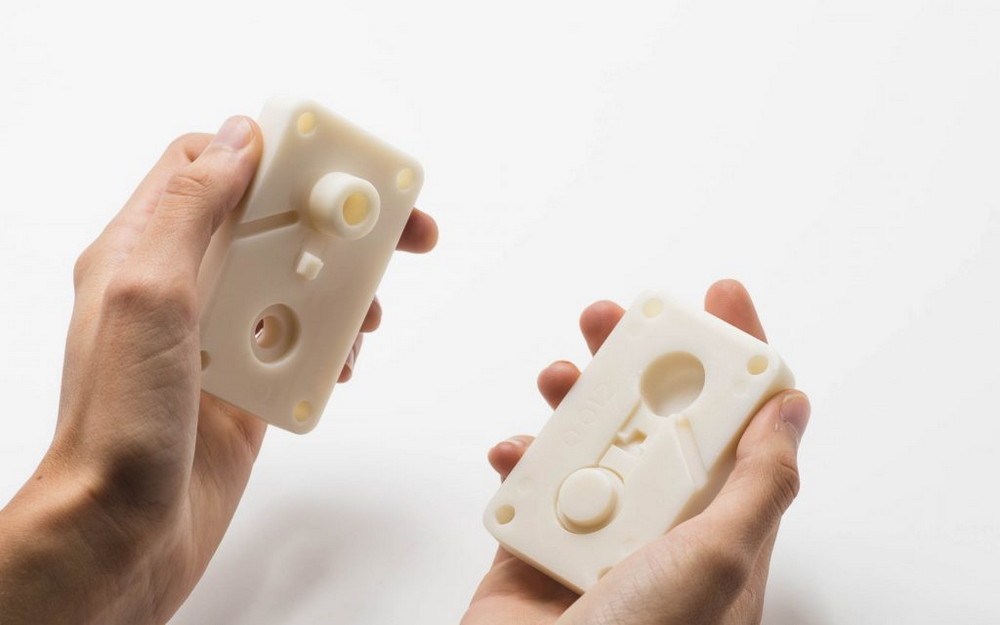
Such molds withstand about 200 castings without loss of quality and are used for small-scale production.
Installation and testing
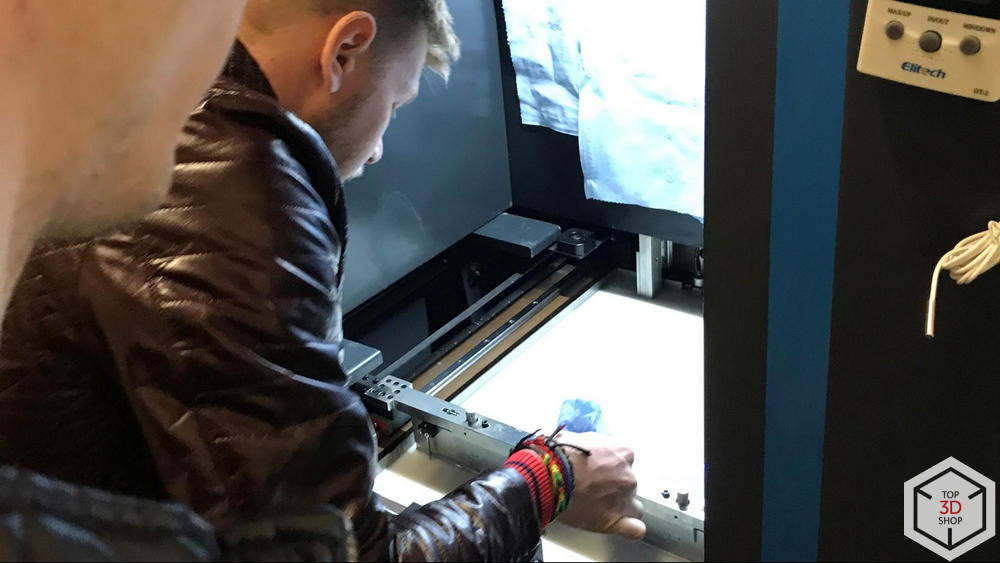
We installed all the necessary additional equipment: a model washing chamber, a ProJet Finisher oven for baking ready prints, and a UV camera for exposure.
The printer was installed according to the level, calibrated the main components: laser system, build platform, squeegee level, resin sensor level. All manuals were provided to engineers who will work on it.
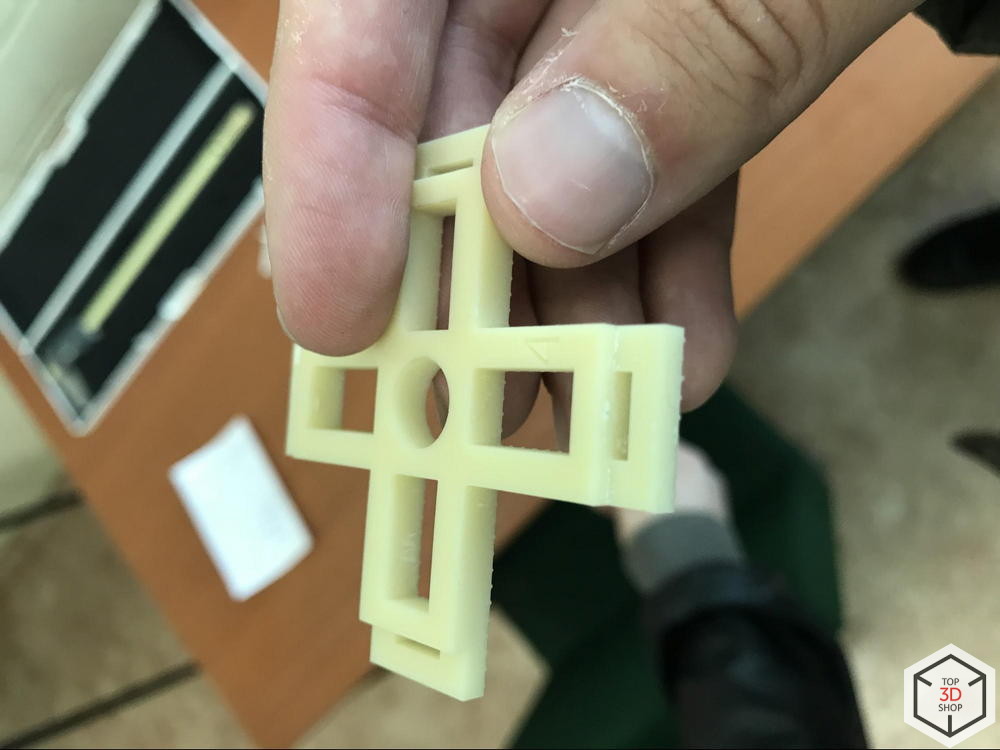
Conducted test printing, washing the model and hardening in the furnace.
Summary, Conclusions
Shining iSLA-450 did an excellent job with printing with Somos PerFORM material and the resulting form will be tested on a vertical injection molding machine.
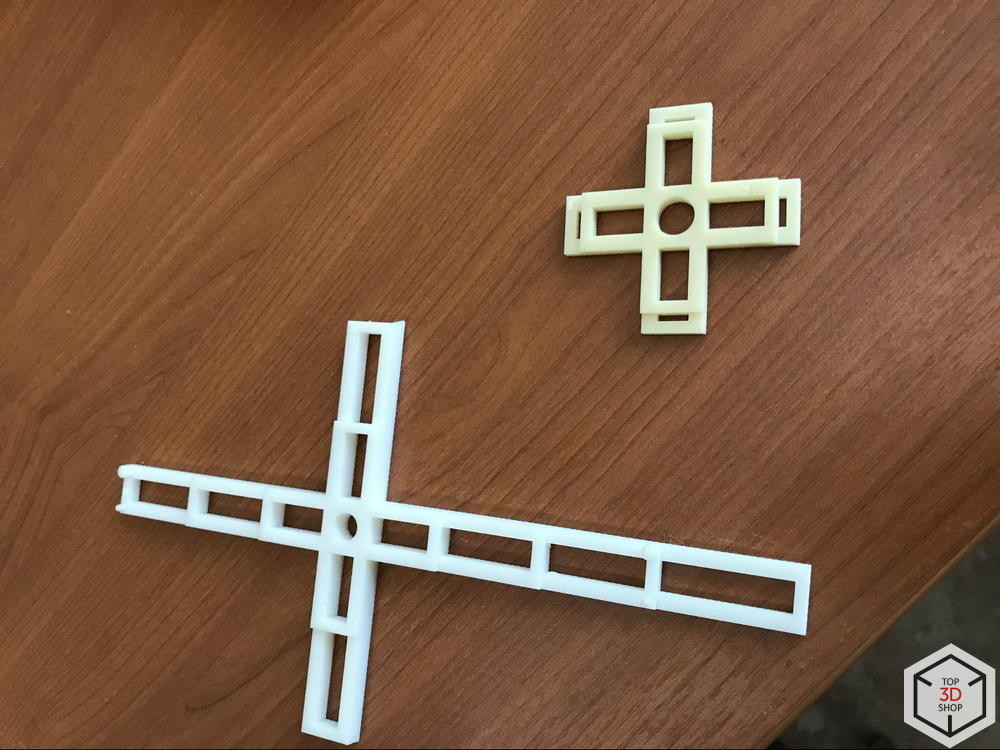
This is not a Catholic cross, and our engineers are not the most religious people, they are just test samples for calibration, which allow us to evaluate the accuracy of the laser in all axes, the correct geometry of the resulting part and tolerance.
The price of an industrial solution with this technology starts at $ 100,000, which is more than justified for small-scale production and provides good savings - the milled form is many times more expensive and takes longer to produce.
3D printing is rightfully taking its place among the production processes. It does not replace and does not seek to replace each of them, but in many sectors it gives indisputable advantages to any production - the speed of prototyping, the ability to accurately produce single and small-series parts that are not inferior in performance to those created by more traditional methods.
To modernize your production and select the necessary equipment, contact the leading integrator of digital technologies in Russia - in the Top 3D Shop .
Want more interesting news from the world of 3D technology?
Subscribe to us in the social. networks:




